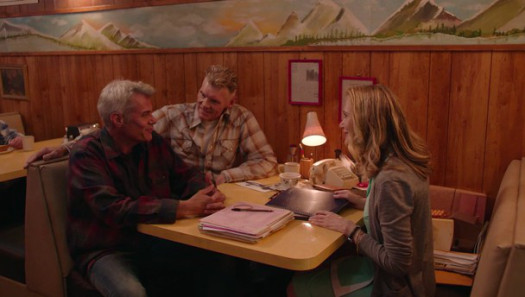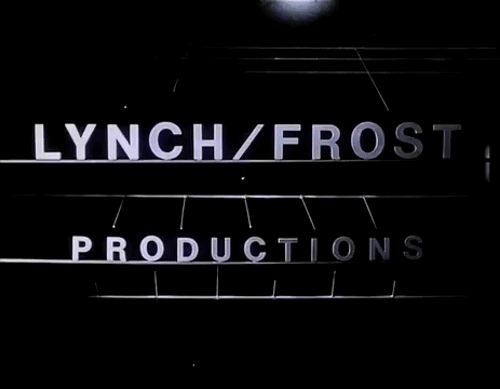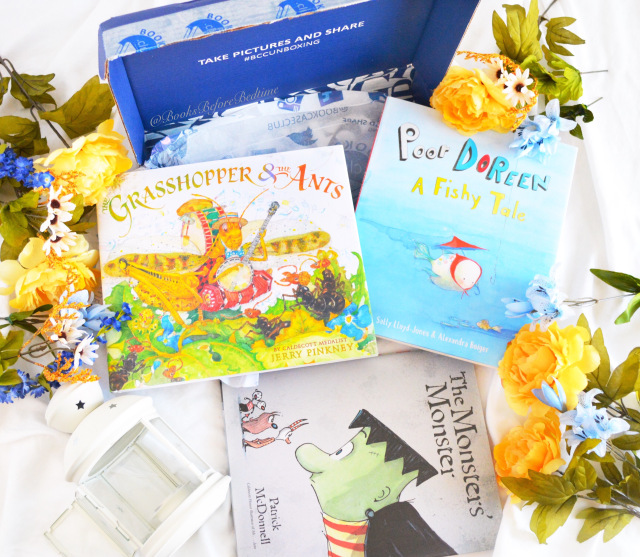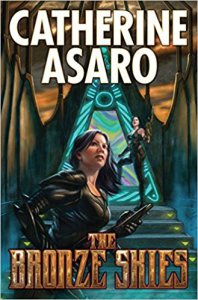Welcome back to my weekly column, The Waiting Room. For those that join me every week I thank you once again and for those just popping in, I use my column to slowly study Twin Peaks’ third season, examining a different topic every week. If you are interested in checking out any of my previous topics, here are the links (which don’t need to be read in any particular order):
What Exactly Is An 18 Hour Film? Audrey Is The New Chet Desmond & More – The Waiting Room Returns
How Part 8 is Crucial to Understanding The Return: The Waiting Room
The Role The Palmer Family & Their House Played In The Return: The Waiting Room
What If I Was Wrong: Exploring The Idea That Agent Cooper Changed The Past: The Waiting Room
Agent Cooper: My Thoughts & Theories On His Journey Throughout The Series – The Waiting Room
“Nostalgia – it’s delicate, but potent. Teddy told me that in Greek, “nostalgia” literally means “the pain from an old wound.” It’s a twinge in your heart far more powerful than memory alone. ” – Don Draper, Mad Men.
When it was announced that Twin Peaks was returning several years ago, fans clamored for the characters, the quotes, the settings and the town they had spent nearly three decades longing to return to. What we were treated to instead was far from a trip down memory lane; we were treated to new stories, new faces and new locations. As startling as the original series was with its unsettling moods, disturbing violence and troubled characters, the new series was perhaps equally as unsettling in terms of how out of our comfort zone we as viewers were. We longed for “our” Cooper, we longed for Audrey, we longed for what we loved in year’s past – yet we never got those things as we remembered them. Nostalgia became a debated topic: Did we need it? Why aren’t we getting more it? Personally I was glad the show took a brave new turn, even if I did secretly long for a few more references to the past. It took stepping back a bit from the work to truly understand how masterfully Lynch and Frost handled the issue of nostalgia in the third season of Twin Peaks.

One of the most common fan criticisms of the show was not getting enough time with various characters. “Legacy characters” from the show’s original run in many cases were relegated to just a few scenes and we only got just a taste of what their life was like and what the future may hold for them. In one of the third season’s most memorable callbacks to the original run, James Hurley was the musical guest at The Roadhouse one night, playing his long mocked ballad, “Just You & I”. It was painfully obvious that Frost and Lynch were aware of how a large portion of the online community felt about James and in response gave us the now often quoted “James is cool. James has always been cool” line to close out Part 2. James to them is not a punchline character. He was heavily featured in both the original run and in the film yet prior to his musical performance late in Season 3, had only been seen briefly in one scene. In a different show, James would have played his song purely as a nod to the past in a bit of fan service. What Lynch and Frost did instead was brilliant. We got 25 years of backstory without any dialogue. We learned that James was still plagued by the same issues – chasing unattainable women, stemming from his abandonment issues from his own mother. We saw James recreate a time in his life when he was somebody, when he was wanted and needed and felt a part of. 25 years later, James is alone. He works an unglamorous job, his only friend appears to be a younger co worker and he hangs out at the same bar that he did all those years ago. The pain that drove his character’s actions in the original series was very much alive and well in his life and we got to see all of that in this one scene. Playing that song, with two women that looked like they were trying to play the part of Donna and Maddy made him feel alive. He was chasing the love of a woman that he couldn’t have, again, and he was using the only means he knew to do so – what had worked for him in the past. Again, a different show would have used multiple scenes filled with dialogue to tell us that story and would have used the nostalgia for fan service purposes only. What Twin Peaks did was used nostalgia to tell a really sad story all in one scene.
Nostalgic locations were something else I found very interesting. The Double R Diner filled nearly exactly the same role that it did in the original series – a place for meaningful scenes to take place (Ed proposes to Norma, Shelly and Bobby talk with their daughter, etc) and also to provide the viewers with a sense of comfort. The Double R has always had that feeling of being at “home”, a place where you could let your guard down a bit. What Twin Peaks did so well in the third season was allow us to stay in that feeling up until Part 11 when the gunshot fired outside the diner. Norma’s quick reaction made me think that this wasn’t the first time something like this had happened over the course of the past 25 years. All of a sudden home didn’t feel that safe anymore. Our nostalgic feelings that remained in tact for the first 11 hours were used against us and left us feeling uneasy and unsafe as viewers. It was masterful storytelling.

The Sheriff’s station was almost the opposite of the Double R. As soon as we saw the location and we saw Lucy, we felt right back at home. Unlike with the diner where we stayed caught up in those nostalgic feelings for more than half of the season, the Sheriff’s station yanked the rug out from us right away. Instead of our beloved Harry S Truman, we had his brother Frank – a character most grew to love quickly, despite still missing Harry. Instead of the cohesive, family like environment we were used to, we saw a station divided between the new generation and the old. The differences were real and the feelings were sometimes hard between the two groups. In the location where most of us wanted to feel nostalgic and sentimental, we instead only got glimpses of what we wanted and often had to look at the separation of two halves trying to make a whole, running a great parallel to our story with our Agent Cooper, a character we so desperately wanted to see back in that location. Here we were teased with nostalgia where we wanted it the most and were instead reminded that a lot changes over the course of 25 years.

Perhaps the most interesting of all the nostalgic locations though was the Red Room. Many of the same cryptic lines were repeated from the original series, by the characters who originally said those lines. The look was largely the same, the pattern of speech was the same, the physical movements and furniture also the same. It was almost like having the exact same fever dream 25 years later. That’s not to say the mythology of this location wasn’t expanded but a majority of that evolution was done outside of the physical confines of the Red Room. It was an interesting artistic choice to have the single most mesmerizing location from the original series become in some ways the least changed and most nostalgic thing about the new season.

When it comes to nostalgia, Audrey has to be a primary focal point of any discussion. Long time devoted fans of the character waited patiently at first to see their beloved Ms. Horne but as the weeks went on and on and we saw countless new faces and locations instead of getting one of the most popular characters from the original run, tensions began to mound. When we finally got Audrey in the 12th hour of the new series, only the name and face was the same. Audrey devotees longed for some semblance of the character they fell in love with all those years ago. They wanted their Audrey back and what they got was a series of scenes completely isolated from the rest of the story with a strange and sleepy man named Charlie. Then it happened. Part 16, Audrey’s story picked up some momentum and she made it to her destination, The Roadhouse. Audrey fans got their moment, a pure nostalgic rush when “Audrey’s Theme” played and she did the dance that caused so many to fall in love with her way back when in Season One. It finally happened and this had to mean our Audrey was back, right? No. Right after her moment of glory we got a quick flash of Audrey in a white room looking shocked and that was the end of her story. In the case of Audrey we longed for nostalgia, we got it and that was it. Was there some underlying message of “be careful what you wish for” when it comes to nostalgia or was it just the setup for a really great cliffhanger? I lean towards the latter but opinion’s vary for sure.

Knowing how much we as fans loved and cherished the original series and film gave Lynch and Frost a great opportunity to use nostalgia as a powerful storytelling tool. They could make us long for it with Audrey, tell a complete character arc in one scene using nostalgia with James, or play with our sense of expectations using locations. Our passion and deep rooted desire to recapture feelings from the past allowed Frost and Lynch to manipulate our feelings and tell a more emotionally charged story as a result. The masters played with our heartstrings like the pros they are and as a result we got 18 hours of art we’ll never forget. Until next time my friends……….

Help us keep the conversation alive! We publish new content daily that can easily be found by following us on Twitter @25YLSite, joining our Facebook group or becoming an email subscriber here on the site. Thank you as always for your support of 25YL!
Share this:




